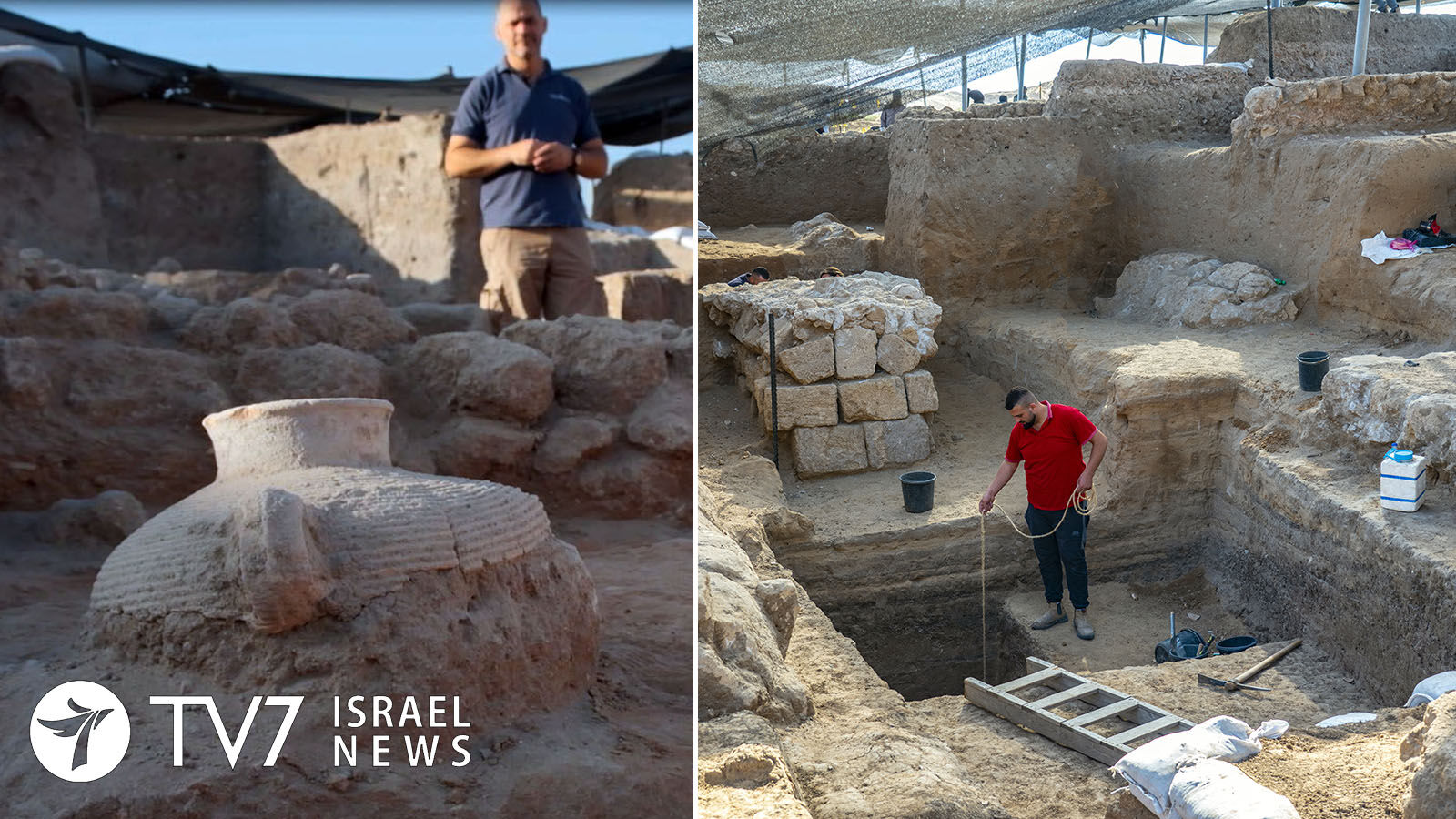Excavations “are revealing evidence of the life—and death” of the Sanhedrin supreme legislative Jewish assembly in the late first and second centuries, said the Israel Antiquities Authority (IAA).
By Erin Viner
The archeological treasures have been unearthed in Yavne, an ancient town where Jewish authorities fled into exile after the fall of Jerusalem during a rebellion against Roman rule some 2,000 years ago.
Fragments of chalkstone ritual cups believed to have been used for Jewish religious rites were found in the ruins of a building dating from the time of the Sanhedrin reveals “clear evidence that its occupants were observing Jewish laws of ritual purity,” said the IAA in a statement.
“The discovery of finds from the time of the Sanhedrin is very exciting,” say Pablo Betzer and Dr. Daniel Varga, directors of the Yavne excavation for the IAA. “This is a direct voice from the past, from the period when the Jewish leadership salvaged the remaining fragments from the fall of the Temple, went into exile in Yavne, and set about re-establishing the Jewish people there.”
An impressive cemetery discovered only 70 meters away from the structure contained dozens of graves including sarcophagi,
“We encountered dozens of carefully arranged tombs spaced out at set distances, which probably indicates the existence of a ‘burial society’—some official body that was responsible for burial,” explained Betzer and Dr. Varga. “There are different types of tombs: some are coffins which are made mostly of stone with one lead coffin.”
The excavation directors add that “based on the cemetery’s location, it was probably established outside the boundaries of the city, in accordance with Jewish and Roman law.
Yavne was one of the most important towns in the southern coastal plain in antiquity. During the Hasmonean period, it held a vital role in the struggle between the Maccabean forces and and Seleucid (Greek) rule, and the town is cited multiple times in the writings of Josephus.
Before the destruction of the Second Temple, Rabban Yohanan ben Zakkai fled from the besieged city of Jerusalem and persuaded the Roman Emperor Vespasian to allow him to reconstitute the Sanhedrin in Yavne, according to the Literature of the Sages.
While it is too soon to determine the identities of those interred due to a lack of symbiology on the graves, the IAA said that historical records and archaeological finds raise the possibility that at least some of the more elaborate tombs may belong to the “sages of Yavne, contemporaries of Rabban ben Zakkai, Rabbi Akiva and Rabban Gamliel.”
Another exciting but mystifying discovery was the placement of over 150 glass phials on top of the tombs. The Head of the IAA glass department Dr. Yael Gorin-Rosen said the phials, about half of which were locally produced with the others imported from Alexandria in Egypt, “were probably used to keep precious liquids such as fragrant oils.” Similar recoveries have been made at both Jewish and pagan burial sites from the first to the early third centuries, but Dr. Gorin-Rosen said, “It is a mystery why the phials were placed outside the tombs in Yavne and not inside them, as was usual.”
Yavne emerged as the most important Jewish spiritual center in the country in the subsequent years between the Great Revolt and the Bar Kokhba Revolt, and it was there that Rabban ben Zakkai and later Rabban Gamliel led the Sanhedrin and the patriarchate (nesiut) in the restoration of the Torah to the Land of Israel and established laws in keeping with the new reality, without the Temple.
“It can be said that the foundations of Judaism as we know it today were laid in Yavne,” says IAA Director Eli Eskozido, adding that, “It is exciting to see ancient accounts of the Sanhedrin translated into actual evidence in the field, with vessels, installations and buildings.”
“We are sure that Yavne has not yet had the last say. Wherever archaeologists scrape the surface here, they encounter a find of national importance, with all that that entails,” said the IAA Director, confirming the continuation of excavations, which were prompted by development of the town.
“The treasures that are part of the land have been exposed thanks to the Israel Lands Authority’s (ILA) extensive investment in financing the Yavne archeological excavations,” said ILA Director Yaakov Quint, explaining that the plan includes 12,500 housing units and 450,000 square meters of commercial and employment space, expansion of the railway and renovation of the town’s train station. He added that the ILA has invested about ₪200 million shekels (€55,621,300 or $63,195,160) in the IAA work to “enable the archaeological finds to be exposed, investigated and preserved for future generations.”
The latest finds join those of the nearby massive wine-production industry from the Byzantine period, already slated for conservation and public viewing.
The IAA has invited the public to register for tours of the Yavne excavation during this week’s festival of Hanukah, as part of Israel Heritage Week.
Annual celebration of Israel Heritage Week is being held this year between 29 November to 6 December at sites throughout the country.
Hundreds of events led by the Jerusalem and Heritage Office, the Israel Antiquities Authority, the Israel Nature and Parks Authority, the National Library of Israel, the Council for Conservation of Heritage Sites in Israel and Yad Ben Zviare. Israelis of all ages can participate in scores of workshops, dramatized tours and archaeological excavations, as well as Hanukah doughnut baking (sufganiot) and countless other delights. There is also a wealth of online activities available, including a heritage quiz and fascinating content from the National Library and other guardians of Israel’s cultural heritage.
